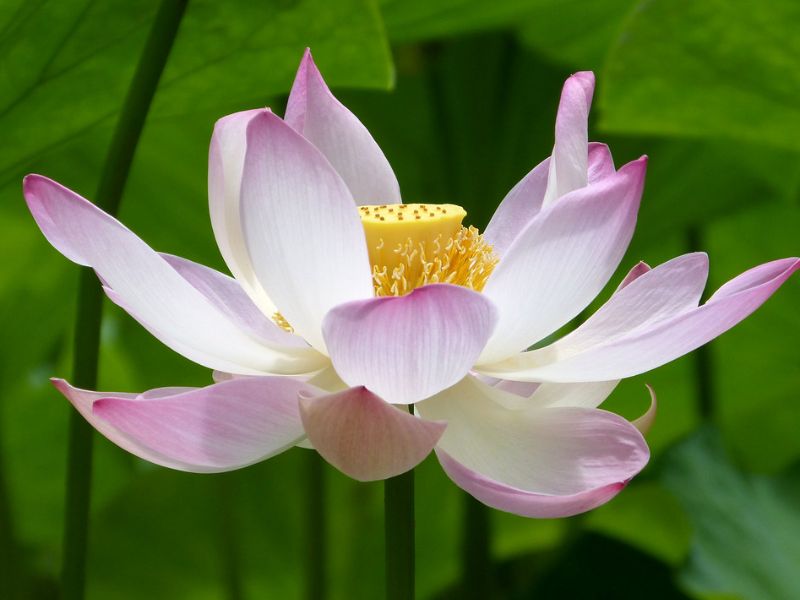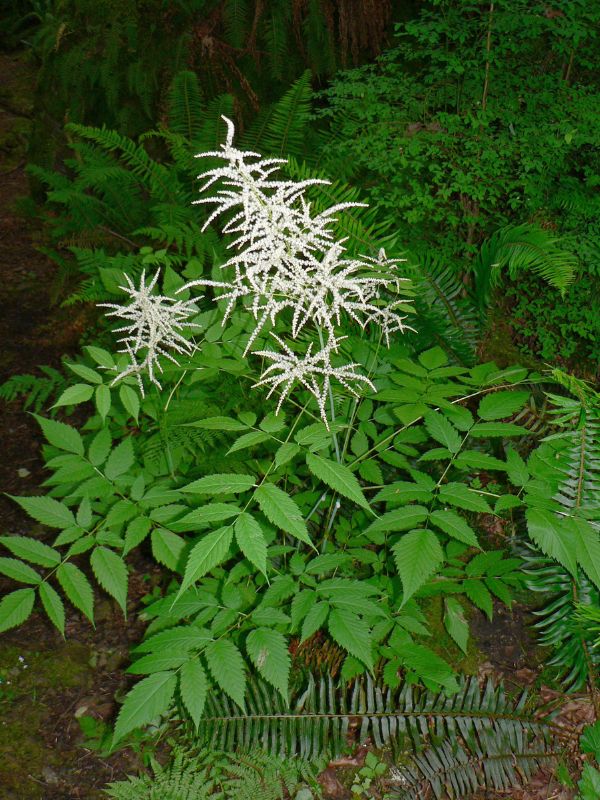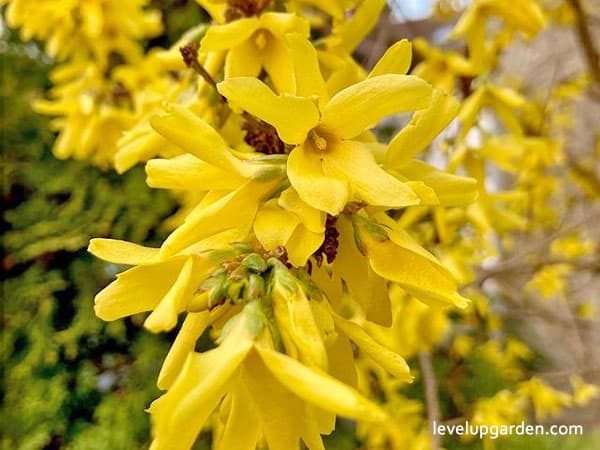Skip Laurel (Prunus laurocerasus), also known as Schipka Cherry Laurel, this hardy evergreen shrub grows very densely, making it ideal for privacy hedges and windbreaks. It grows equally well in sun or shade, is drought tolerant, deer resistant, and adapts well to many soil conditions. Skip Laurel has dense, glossy evergreen foliage and white candle-like flowers in fall and winter.

Cherry Skip Laurel is a cultivar with the botanical name Prunus laurocerasus ‘Schipkaensis’. This shrub is fast growing and has dense, broad evergreen foliage, making it an ideal plant for creating new privacy hedges. It also produces impressive white spire-like flowers in the spring. Perhaps the most appealing aspect of the sakurada modoki is its versatility. It also has a resistance to feeding damage by deer that is not often seen in other evergreen trees.
I. Plant Profile – An Overview of the Skip Laurel
| Common names | Cherry Laurel, Schipka Cherry Laurel, Schip Laurel, Skip Cherry Laurel, Skip Laurel |
| Botanical Name | Prunus laurocerasus ‘Schipkaensis’ |
| Plant Type | Shrubs |
| Plant Family | Prunus – Flowering Trees |
| Exposure | Full Sun, Partial Sun |
| Water Needs | Average |
| Maintenance | Low |
| Soil Type | Chalk, Clay, Loam, Sand |
| Soil pH | Acid, Alkaline, Neutral |
| Soil Drainage | Moist but Well-Drained, Well-Drained |
| Mature Height | 10-18 ft. |
| Mature Width | 5-7 ft. |
| Sunlight | Shade to Full Sun |
| Growth Rate | Moderate |
II. Appearance
Schipka Cherry Laurel has smaller leaves than the common variety, making it a neat plant, especially when clipped, and it blends well into gardens of any size. It is also more hardy than the common cherry laurel, making it an ideal choice for gardeners in cooler areas. It grows in most soils and will grow faster if watered and fertilized when young, but mature plants are self-sustaining and quite tolerant of drought. It is free of any noticeable pests and looks attractive all year round.
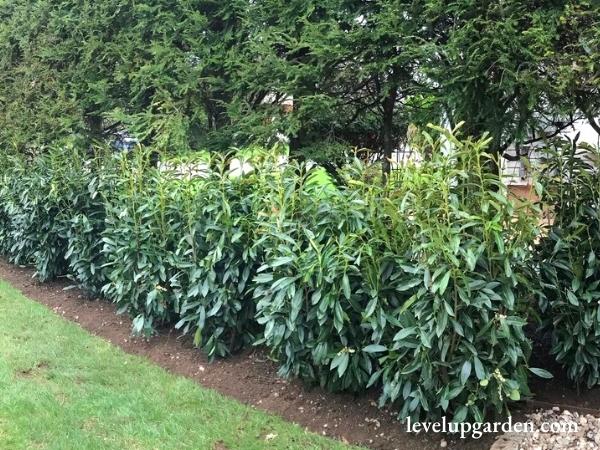
The glossy green leaves are dense and have several teeth near the apex as the leaves narrow. It flowers in spring and has denser petals than ‘Otto Luyken’. The leaves tend to be perpendicular or slightly drooping to the stem, whereas the leaves of ‘Otto Luyken’ are attached upward at a 45-60 degree angle to the stem.
Skip Laurel has flowers that are small, white, and densely arranged in 4-inch-long cylindrical racemes in the leaf axils. Its leaves are arranged in alternation, have simple lanceolate, serrate near the apex, with at least two prominent glands on the underside near the leaf base and midrib. These leaves are dark glossy green in color, narrow, and 2 to 6 inches long.
It has fruits that are 0.5 inch long. They are purple-black in color. The fruits appear in early summer and mature in midsummer.
III. Growing and Care Conditions
Skip Laurel is a large evergreen shrub that grows up to 18 feet, but is usually grown as a screen or hedge. It can be easily pruned or trimmed to form an extremely dense evergreen screen or windbreak, creating a private space in the garden. It is hardy, easy to grow, and grows up to 2 feet per year, quickly creating the dense screen needed to protect privacy or hide an unpleasant view.

This plant is very hardy and can tolerate thin or dry soil, shade, and air pollution. If you need a fast-growing plant for dense screens that will thrive in extreme conditions of heat, dryness, and shade, Schipka Cherry Laurel should be your first choice.
It is difficult to find plants that will grow in both sun and shade. However, most yards have plenty of shade, and the border of the yard where hedges are most needed is often in the shade under the trees. Skip Laurel is truly an excellent plant because it thrives in all light levels without yellowing in the sun or weakening in the shade.
Even if part of the hedge is shaded, it will be just as strong as the part in the sun. Even if there is some shade, there is no need to look at a hedge with thin, shaggy sections. Whether in sun, semi-shade, or full shade, this plant will do the job for you.
Its resistance to air pollution and dust makes it an ideal tree for town gardens in urban and demanding environments. Its dense growth also provides excellent noise and dust screening, making it ideal for urban settings.
Planting
First, choose a sunny location (4-6 hours of sunlight is sufficient) with well-drained soil. When ready to plant, dig a hole about three times the width of the root pot and place the plant.
Light
Sip Laurel can grow in full sun or shade. It is shade tolerant but grows best in some sun. In shade, it will grow more open than in full sun.
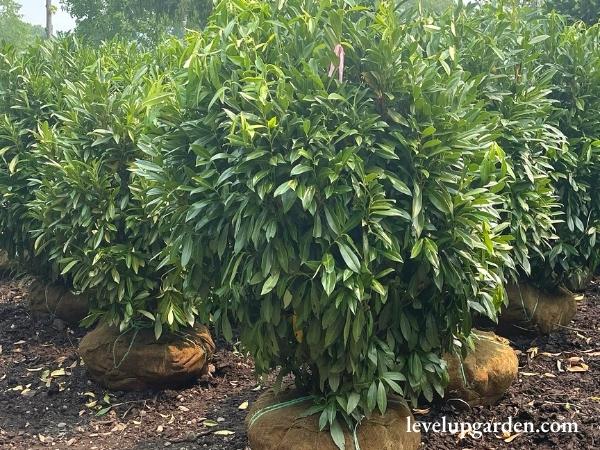
Watering
Once planted, Skip Laurel is relatively drought tolerant, but it is important to water it regularly during the first few seasons. Water about once a week or so, or dig down into the surrounding soil a couple of inches to check the soil. Generally, It is recommended running a garden hose for 1 to 3 minutes once a week, depending on the soil.
Fertilizer
We recommend using a shrub or tree fertilizer unless soil tests indicate low or deficient nutrients. If the soil is deficient or low in nutrients, you should use a nutrient-specific fertilizer.
Soil Requirements
Laurel grows well in all types of soil, from sandy to clay. The only soil it does not like is one that is well moist or soggy. It also grows well in both acidic and alkaline soils, making it an ideal plant for most gardens, adapting to almost anything.
Skip Laurel will grow in almost any soil and can tolerate poor soil, clay, and urban air pollution. However, for a fast, strong, healthy hedge, add organic matter such as compost, peat moss, or humus to the soil when planting, and water generously in the first few years. Once planted and grown to a suitable height, it will grow rather well without any watering or fertilizer at all.
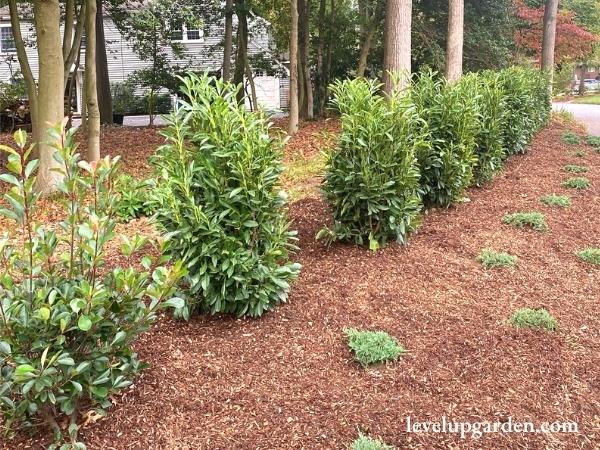
Mulching
Mulching around the tree will conserve water and suppress weeds; spread it 2 to 3 inches thick at the base and a few inches away from the trunk. If necessary, renew the mulch in the spring and simply cover the old mulch without digging into the ground.
Temperature
Skip Laurel is well known for its hardiness. Other varieties of Laurel turn that beautiful glossy foliage brown and ugly in winter. If you live in a cooler area, such as Zone 6, be careful choosing this variety for your garden. In such areas, it will survive the winter without browning and will look as healthy and fresh in the spring as it did in the fall.
Not only can this tree tolerate temperatures down to minus 10 degrees Celsius, but it will also thrive in warmer areas, even down to zone 9. Whether you live in a hot, dry area or a hot, humid area, this plant will thrive well in your yard and be a wonderful addition wherever you live. Even if you live in a warmer zone 5 area, this tree will grow well and will only produce a few brown leaves in the winter, which will soon be replaced by new spring shoots.
Pruning
One of the selling points of cherry squash is that it responds surprisingly well to pruning. As such, gardeners can prune this plant heavily to create a beautiful hedge shape. In addition, the fact that new shoots appear no matter how many times the plant is pruned is due to the vigorous growth of the cherry tree.
The best time to prune cherry pines is in the spring, after they have flowered. Pruning should be done at the same time as the annual fertilizer application.
Pests and Diseases
One of the most prominent problems for those growing evergreen hedges is deer feeding damage. After years of growing a healthy hedge, it is frustrating to have a herd of deer eat up all the foliage.
However, the biggest advantage of cherry skip laurel is that it is deer resistant. However, it is not free from pests and diseases. Acid rot can occur, and weevils and aphids can also attach.
IV. Uses
Skip Laurel is ideal for hedges, privacy screens, and windbreaks. The dense canopy of this shrub provides shelter and nesting sites for birds. It is ideal for planting as a specimen or in small groups, and can be planted in large numbers for screens and privacy hedges.
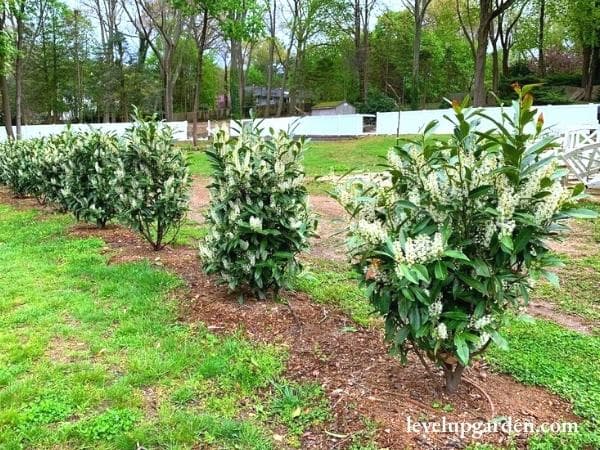
This urn-shaped shrub tends to grow out the top, so planting it at the back of the border and planting other small evergreen shrubs in the front will help hide the open lower branches if a thick screen is needed.
V. Why should you buy this plant
The evergreen Laurel Skip Laurel requires absolutely no care once the tree is established. This gorgeous, dense evergreen can be tailored as a hedge or left uncut to reveal its natural beauty.
But if you want a quick and dense screen or privacy hedge, skip laurel is the right choice. Wherever you plant skip laurel, you get dense, glossy evergreen foliage. The more you plant them together, the denser the foliage will be.
They grow 2 feet each year, so you’ll have an impenetrable screen or hedge in no time. Even if you let it untrimmed, skip laurel will grow naturally, it will produce gorgeous candle-white flowers in the spring and dark-colored berries in the fall and winter.
If you need a fast, thick hedge for privacy, to block the wind, or to keep out dust and traffic noise. Also, if you want to plant beautiful evergreens but don’t have time to care for them.

The most distinctive feature of the hedge is its beautiful foliage. Skip laurel is a type of cherry laurel, not a true laurel at all. It is so named because its leaves resemble bay leaves. The bay leaves used in cooking are “true” bay leaves.
Skip laurel leaves are similar to these, but are more slender and shiny. The leaves are so shiny that it is hard to believe that they are evergreen; they look as if they have been polished. The leaves are not delicate, however, and are as hardy as the plant itself.
Skip Laurel’s top growth is thick and full, while the bottom growth is slightly open. If you want your privacy hedge to be a green wall that sticks to the ground, plant a few shorter evergreens in front of the “bare ankles” of the skip laurel for complete privacy. The smaller plants should be planted well spaced in front of the skip laurel so that the mature sizes of both plants overlap and the smaller evergreens are not buried by the foliage of the skip.
Smaller green screens may be needed instead of a long continuous hedge. Living screens block undesirable views, shade sitting areas, and protect small plants in the foreground from strong winds. A single skip laurel can be planted to form an individual screen, or groups of three, five, or other odd numbers can form a triangular or linear screen.
If you want to add a hedge to your landscape design, you will choose plants primarily for their foliage, which is their most important feature. However, when you plant skip laurel, you get a little extra fragrant white flowers that bloom in the spring. The individual flowers are not large, but they are showy because they bloom in profusion.
After the flowers bloom, small fruits are produced. Skip laurel is in the same family as the edible cherry tree, so the word cherry in cherry laurel is a true description. In fact, skip laurel produces cherries, but they are different from what you might imagine.
Instead of the bright red berries that you are used to eating, they bear purplish black berries. They may not be appetizing, but the birds in your backyard will thank you for it. Many birds eat these cherries, including robins, cedar waxwings, and bluebirds. When considering what plants to plant in your evergreen hedge, planting Skip Laurel will also allow you to grow plants that will provide food for birds.
Skip Laurel has another advantage for wildlife, birds like to nest in it. The plant’s branch structure and thick foliage have the same characteristics that birds look for in a nesting plant. If you want to incorporate more plants that help birds, skip laurel is a great choice.
If you want a more informal feel to your hedge, not too close spacing between individual plants, place the Skip Laurels five feet apart. If you want a more open atmosphere, plant them spaced about 3 meters apart, so that each plant is independent but in a row. But if you want a solid hedge, space them only 3 feet apart from the next plant. As the plants grow, the branches will overlap, creating a continuous hedge.
They are an excellent choice not only as a hedge, but also as a foundation planting on a property, as a background shrub in a large garden, as a round or upright shrub, trimmed or untrimmed, to give your garden a mature, traditional look. If left untrimmed, it will grow into a rounded tree 18 feet tall and 10 to 20 feet wide, making it an attractive background plant for a large garden.
Skip Laurel can easily grow up to two feet a year. Left untrimmed, they can reach 10 to 18 feet in height, making hedges of almost any size easy to achieve. However, it can also be maintained for years at a height of several feet. The leaves are glossy dark green and always look lush and healthy. This is such a hardy plant that it will thrive even if you forget to push it into the ground.
If planted densely, a solid barrier will be created in a few years. Planting them farther apart will take the same amount of time. Laurels are usually larger in width than in height, so spacing them wider is more economical.
If you want a trimmed and neat hedge, plant them 3 to 4 feet apart for immediate privacy. If you want to increase the density of the hedge and also block noise and dust, plant in two rows. The rows should be spaced 3 feet apart and planted 4 to 6 feet apart, staggered to form a zigzag. This will create a thick, impenetrable hedge that will guarantee absolute peace and privacy.
The best way to create a perfect hedge is to dig a trench. After preparing the soil according to the method described below, make it twice the width of the pot and only a little deeper. Then arrange the plants in the trench, adjusting the spacing so that all the plants are exactly the same distance apart and in a straight line. The first and last plants should be spaced half of the chosen planting distance from the beginning and end of the hedge. This little bit of work goes a long way toward making a perfect hedge, so please take a little more time to make sure you have a 100% correct hedge.
VI. FAQs
How big do skip laurels get?
Skip Laurel is 10 to 18 feet tall and 5 to 7 feet wide, growing at a moderate rate of about 24 inches per year. Its leaves are glossy green all year round and it produces fragrant white flowers in the spring. In the fall and winter, it produces red berries that attract small birds.
How long is the growing season for Skip Laurel?
Skip Laurel grows to a height of 10 to 18 feet and a width of 5 to 7 feet and takes about 10 years. It has been known to grow up to 18 feet tall.
How poisonous is skip laurel?
Skip Cherry Laurel is a toxic plant that contains toxins that can cause serious health problems if ingested by humans or animals. If you have any of the Prunus laurocerasus varieties, including ‘Schipkaensis,’ be careful that your pets or children do not accidentally eat the leaves or black berries.
Do skip laurels attract bees?
The white flowers of Skip Laurel have a very nice fragrance and can attract beautiful pollinators such as butterflies, bees, and birds.
